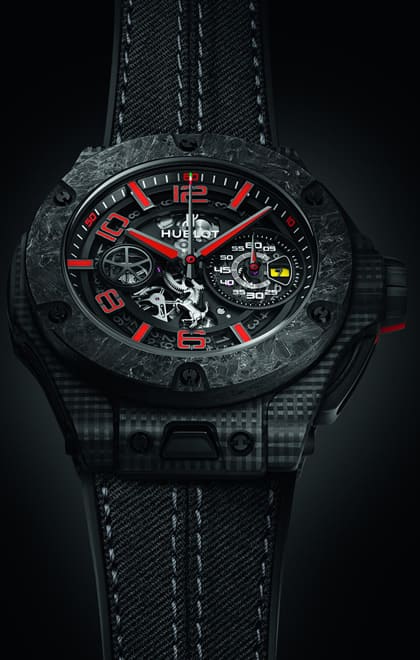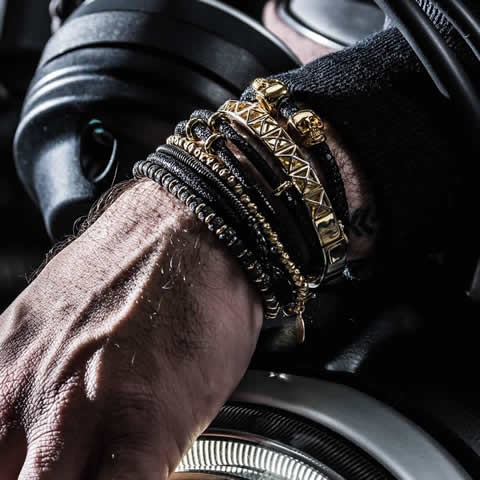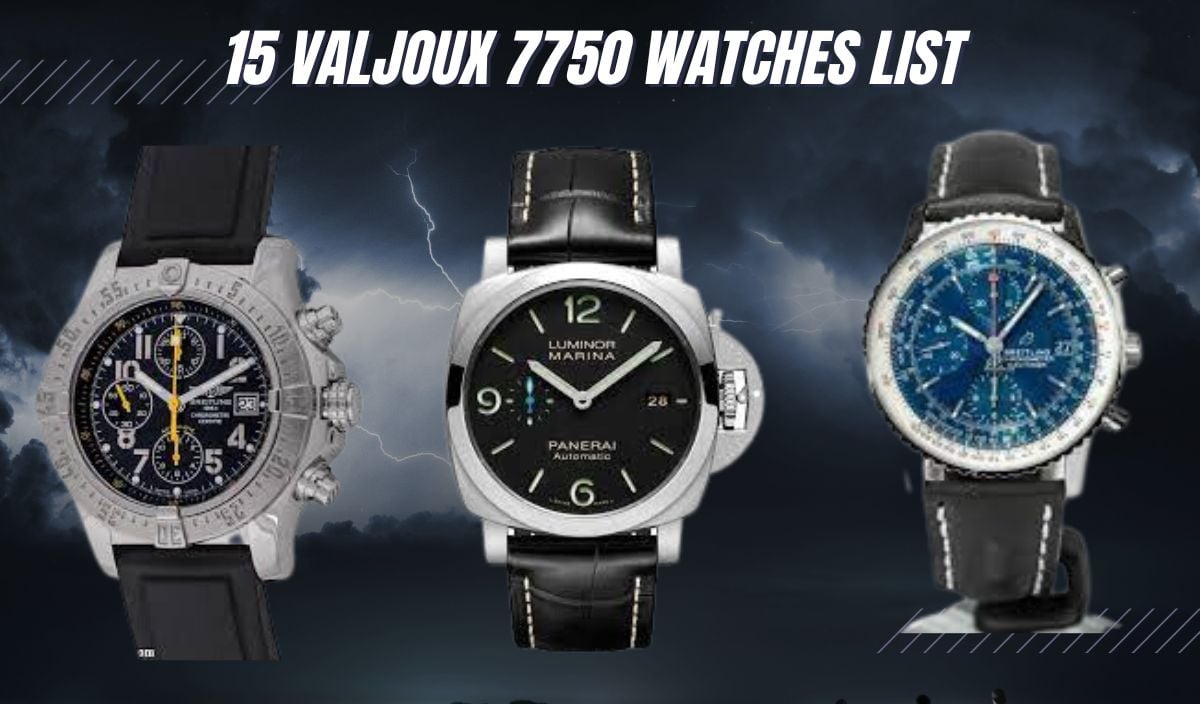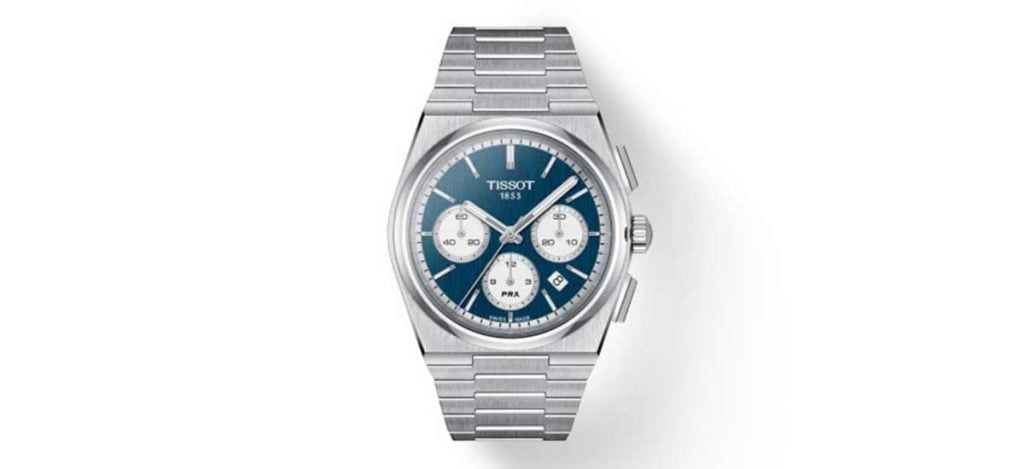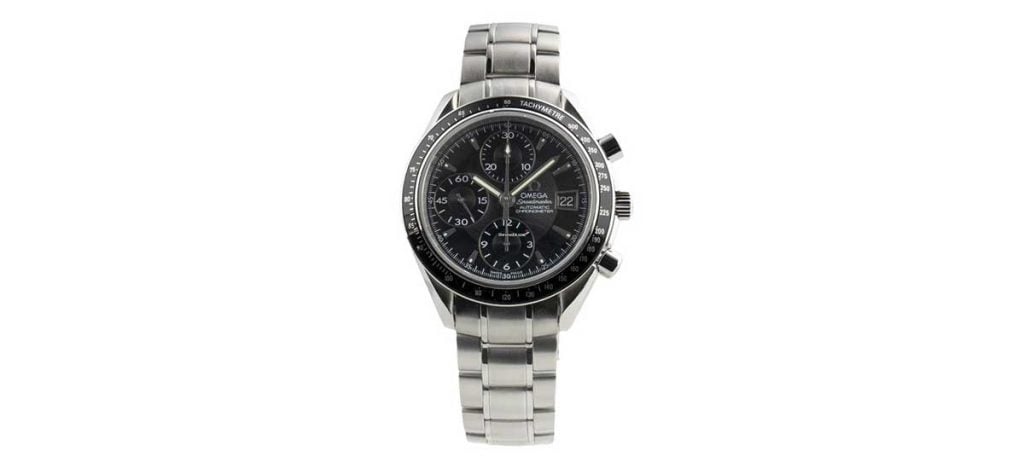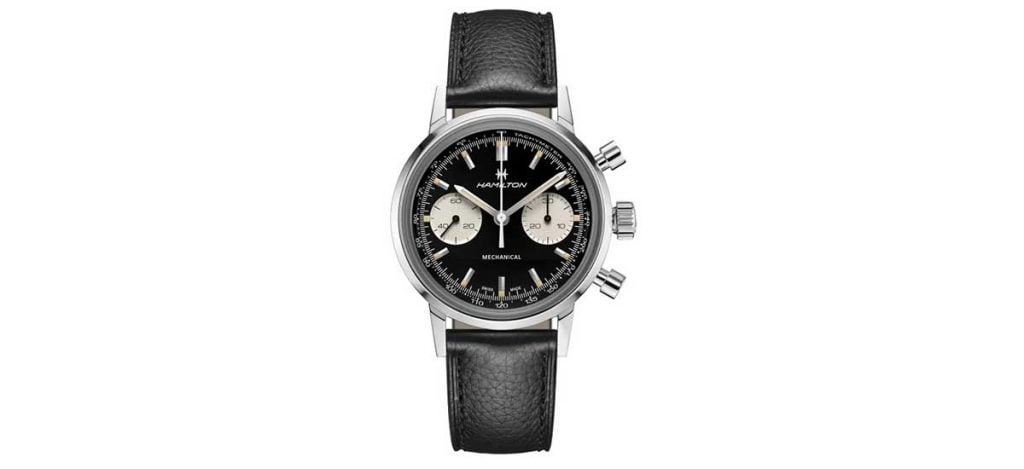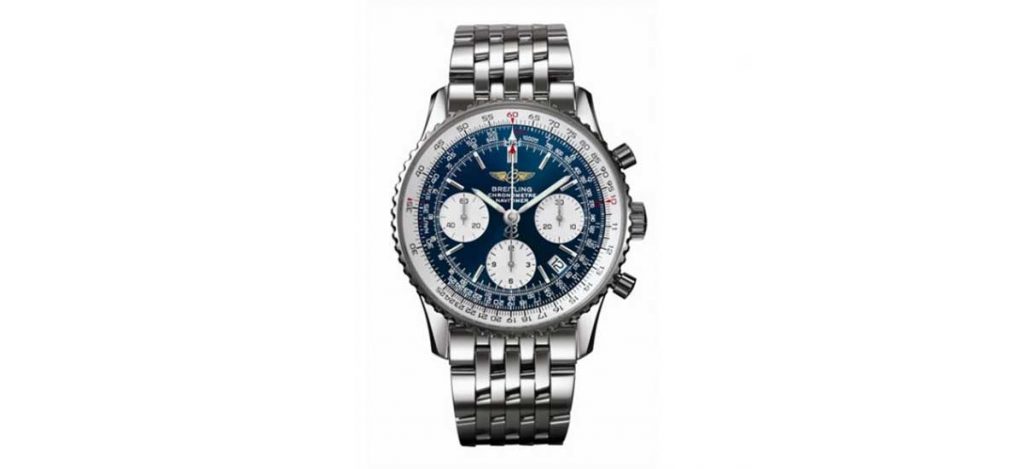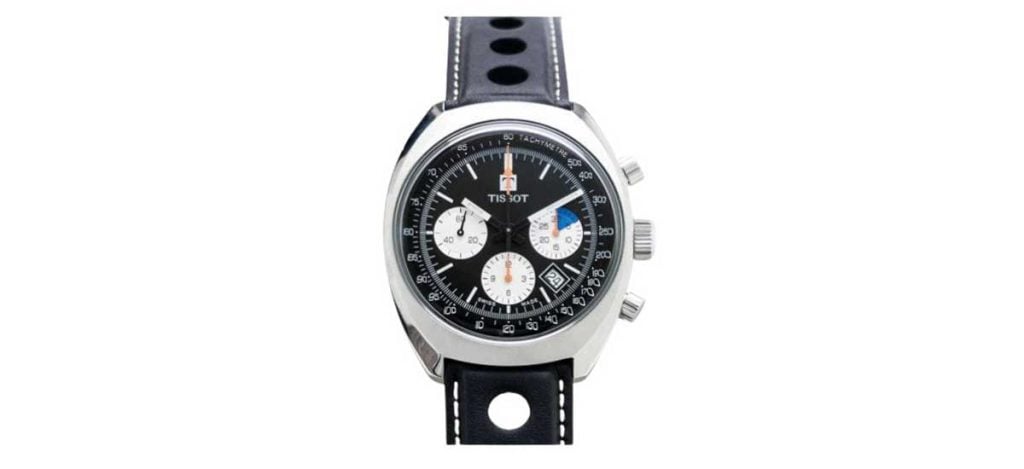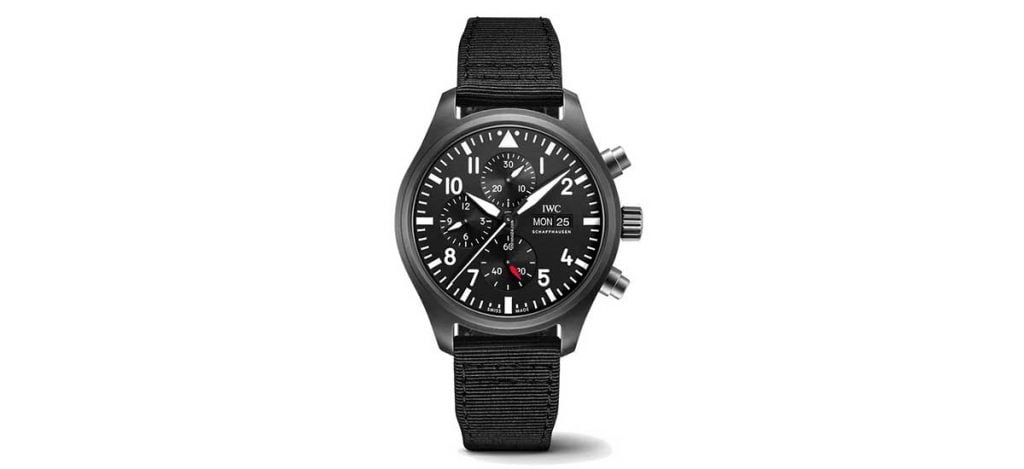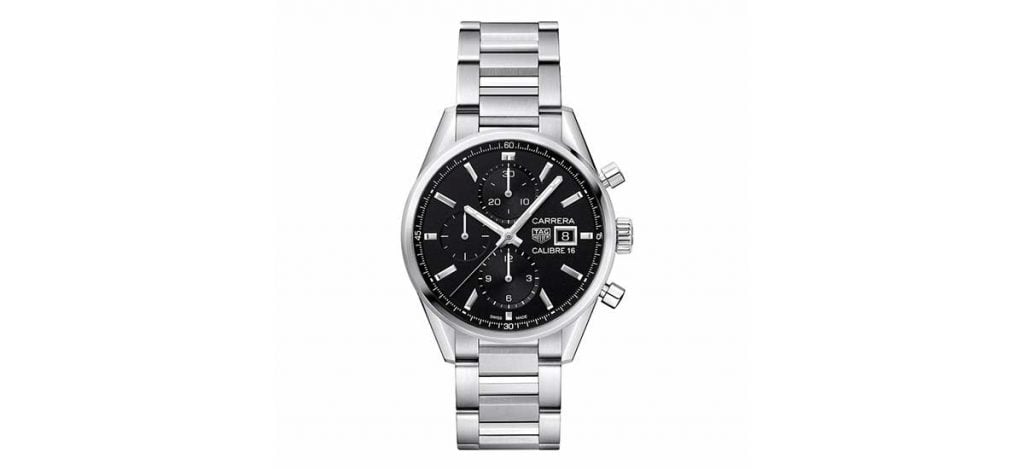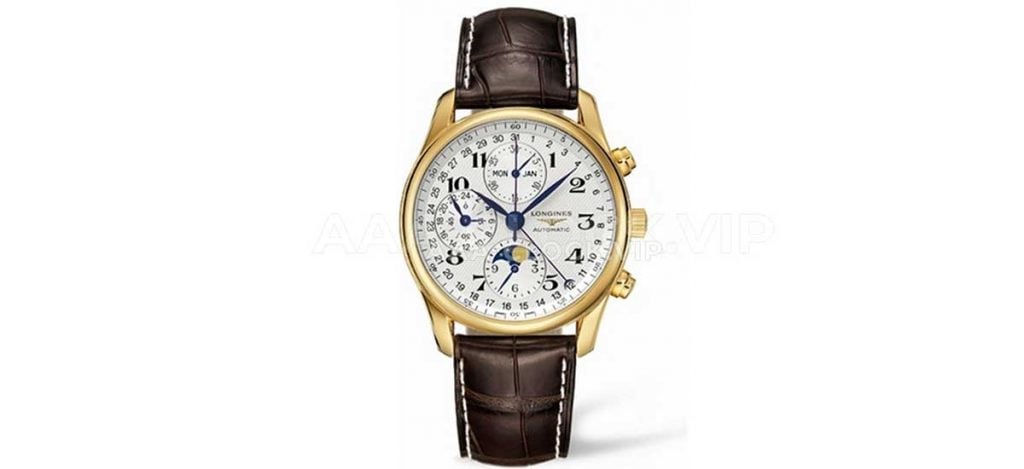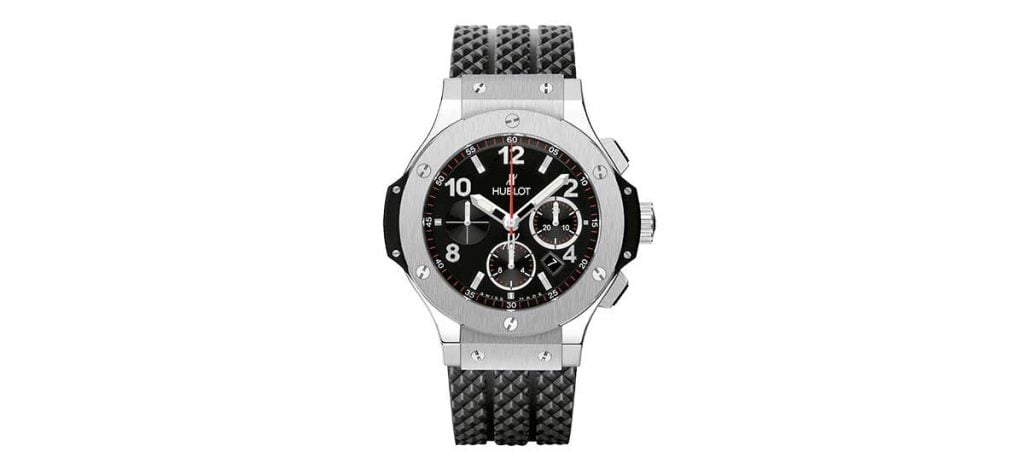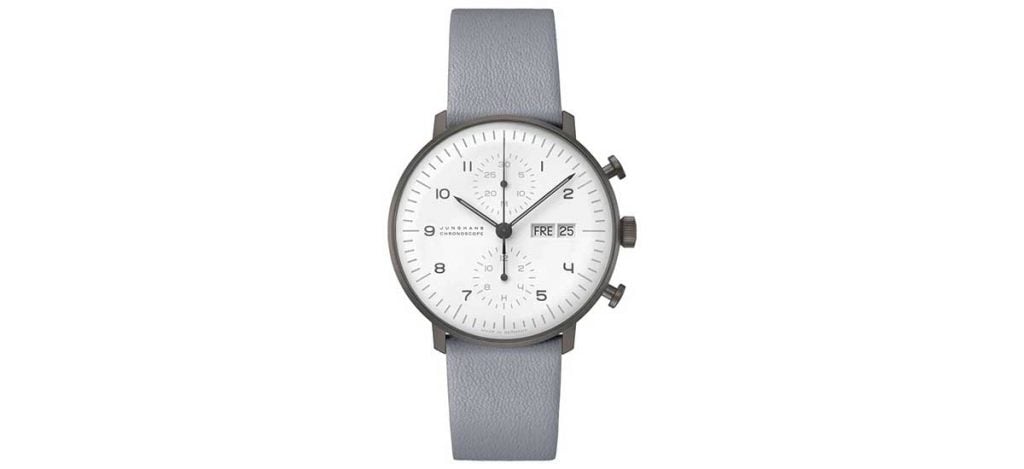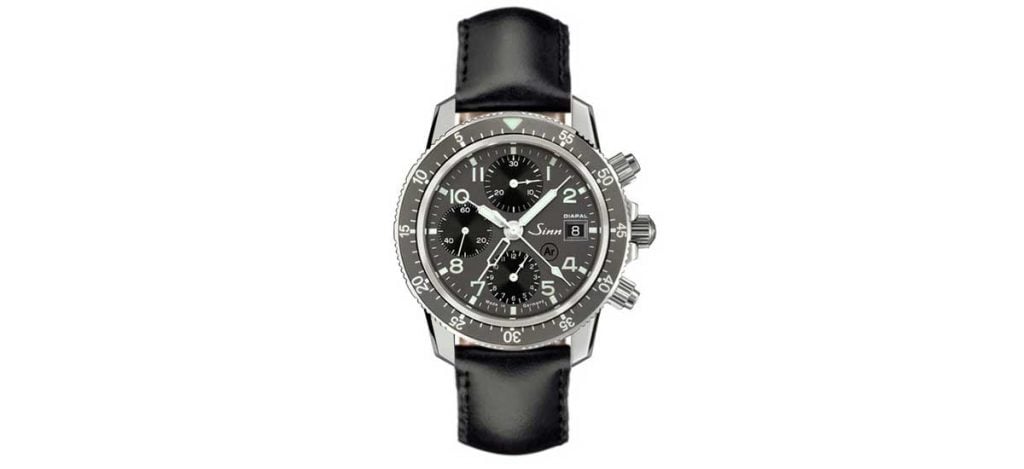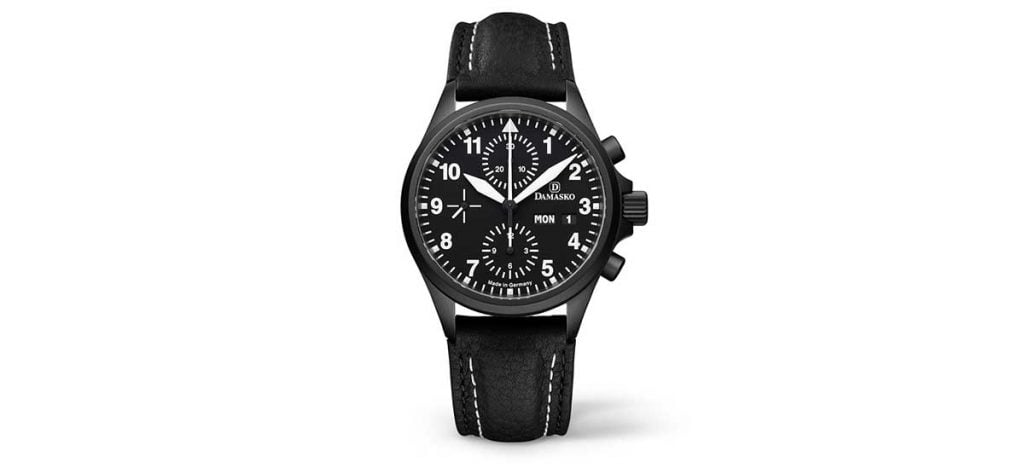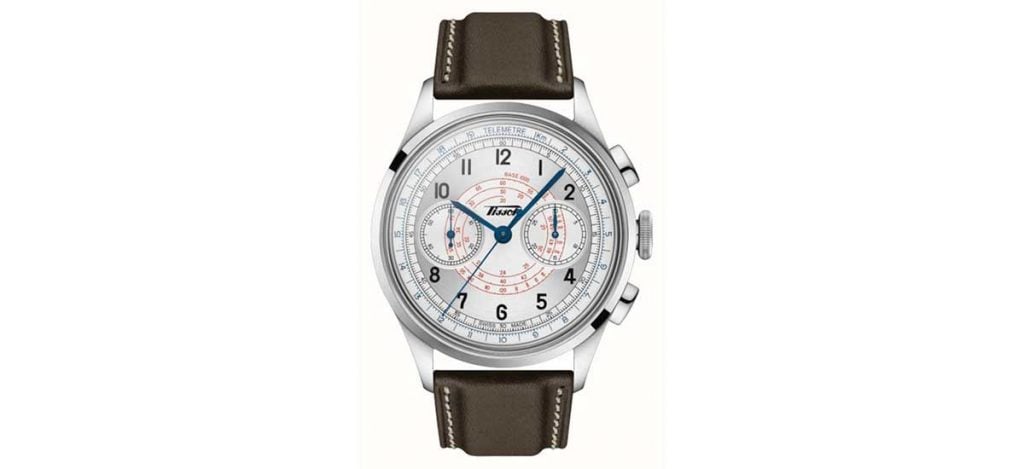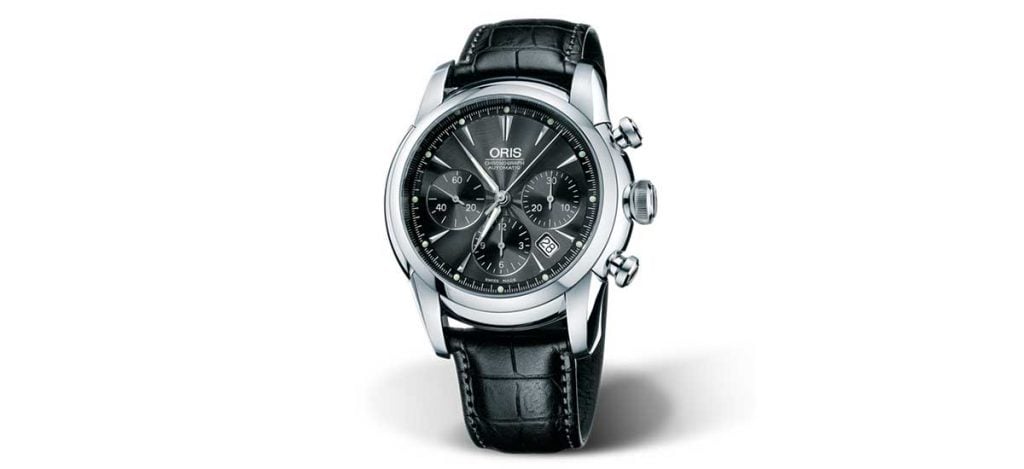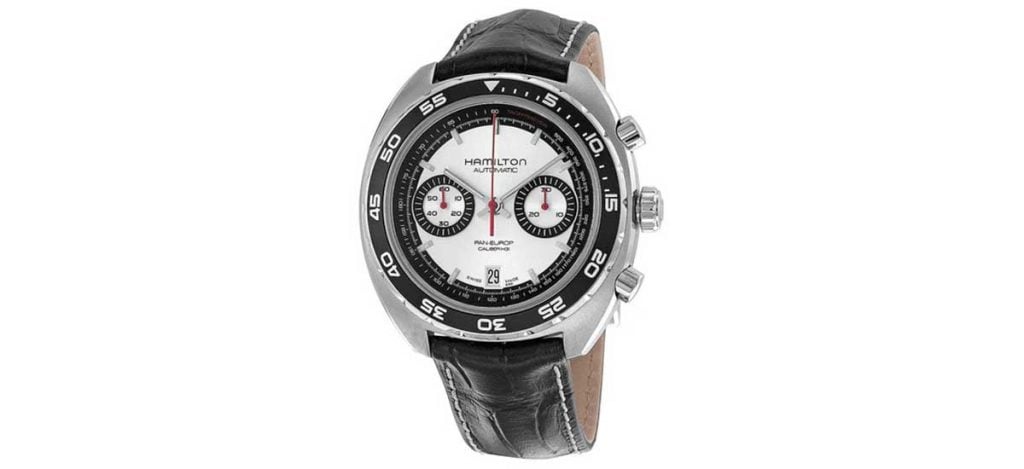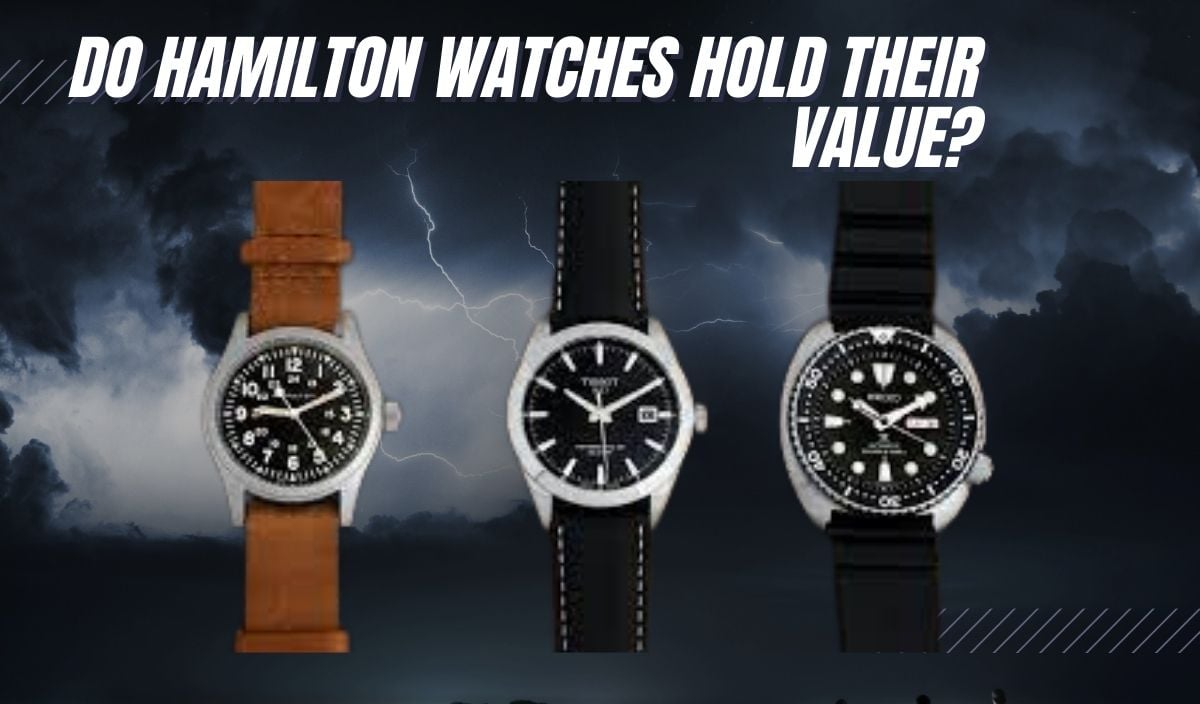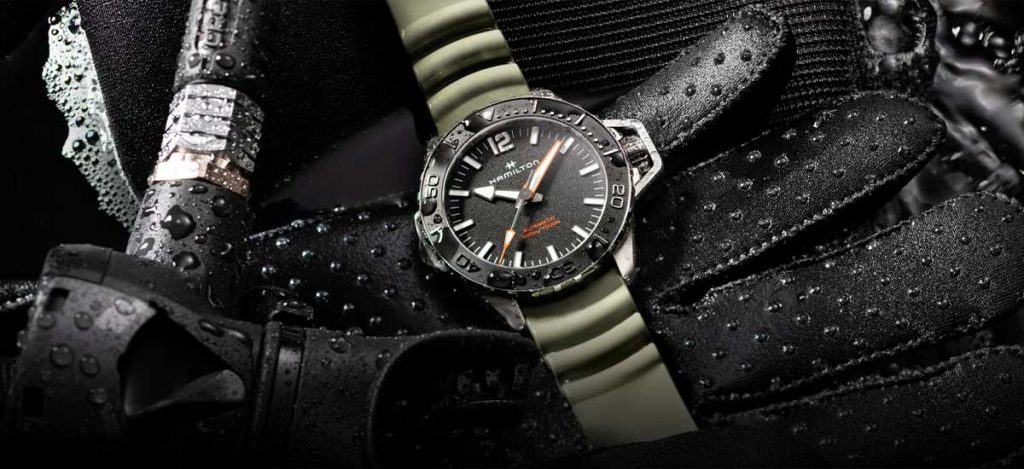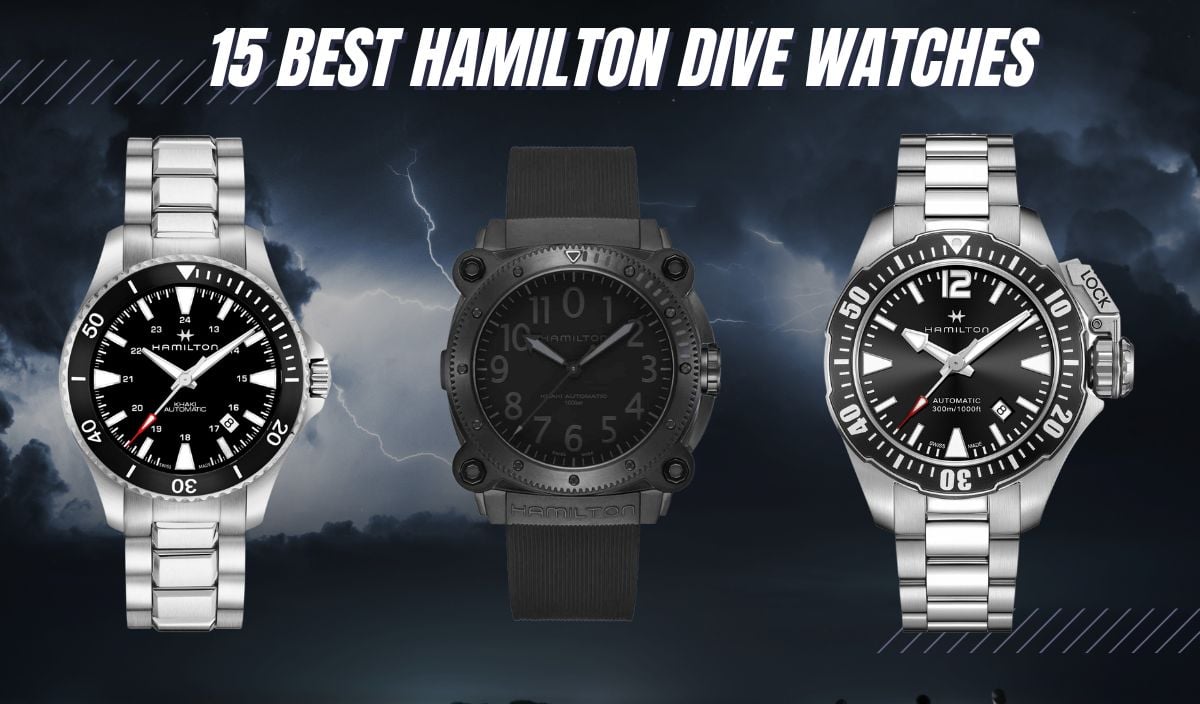
Since its inception, the practice of timekeeping has vastly evolved and grown in diversity relative to our perception of how we prefer to tell time. Innovation, storytelling, and originality are facets of the watchmaking industry that have been glorified and celebrated by us watch enthusiasts as we embrace our journey of collecting the timepieces worthy of our attention.
The dive watch, for its robust characteristics, legibility, and versatility, has become the most popular segment within the watch industry. Hamilton, as a result of its long heritage, watchmaking know-how, strong expertise, and value-for-money pricing, has a formidable and novel collection to dive into.
About Hamilton Watches
Hamilton’s journey in watchmaking has seen it go from strength to strength with changing times. Its roots are of an American brand that built a reputation as a tool watchmaker, at the forefront of technology with quartz, electric, and digital watches, with its own distinctive design language and cultural influences from its long existence away from Switzerland.
Through this, the brand was able to build a strong relationship with cinema and celebrity culture during the early era of filmmaking. Now in the modern age, Hamilton comes with a Swiss label, owned by a powerhouse that is the Swatch Group, with a back catalog of ETA Calibers to support its broad collection, allowing the brand to offer a 2-year international warranty.
Its storytelling and successful branding on the silver screen are still in tradition for the watchmaker as it surpasses 90 years of participation.
The collections Hamilton has on offer today are derived from its original history and commitment to offer value for money, purpose-driven timekeeping instruments. Among its tool watch offerings is the Khaki Navy collection, making available automatic or quartz calibers and many model variations for the comprehensive needs of a professional, leisure, or desk diver.
Brief History of Hamilton
Hamilton was established in 1892 as an American watchmaking brand. It built its early reputation through its successful involvement in the booming railroad industry. In 1919 Hamilton became the trusted supplier of timekeeping instruments to the U.S Airmail Service and has since been trusted for its accuracy in flight, with a dedicated collection to suit the needs of aviators.
Hamilton saw its involvement as a pocket watch supplier to the U.S. Military during World War I, following which it halted its commercial production to support the high volume needs of World War II. This historic venture has made Hamilton renowned for their field watches, even today.
Dive Watch History
Hamilton, as an early watchmaker before waterproofing technology was the norm, pushing the envelope with the introduction of its BUSHIPS models during World War II. These saw the use of a canteen-styled screw-down crown, an early method of water protection that the Navy saw interest in using for military application.
In 1951, Hamilton introduced a commercial variant of this model named the Frogman that would be featured prominently in the 1951 movie ‘The Frogmen’ – a true story about the operations of U.S Navy Underwater Demolition Teams, known as Frogmen, during World War II. It was the first movie to feature the unseen challenges and novelty of scuba diving, creating a huge buzz for the underwater experience and the recreational diving trend that would follow during peaceful times.
The Best Hamilton Dive Watches
Now, let’s have a look at our list of the 15 best Hamilton dive watches.
Hamilton Khaki Navy Frogman Auto (ref. H77825330)
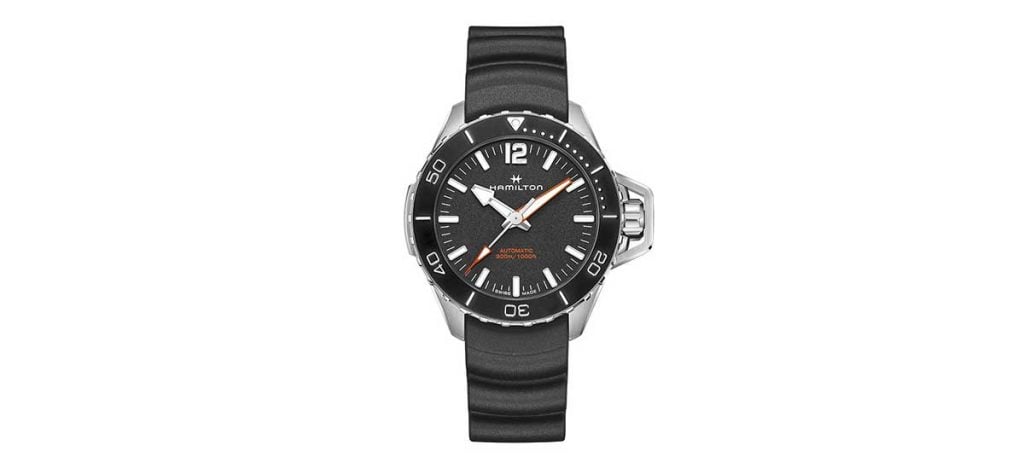
Proudly inspired by Hamilton’s original dive watch history, Hamilton continues its lineage with its most recent iteration of the Khaki Navy Frogman Auto 46mm. Just like the first canteen-crown models, the current model shares similar inspiration in aesthetics, form, and function with a detachable Panerai-esque crown protector for its screw-in crown, giving it a striking yet tool-like purposeful resemblance to a high-pedigree dive watch.
Its case size of 46mm accommodates the needs of a hardcore diver, adding to its legibility and functionality underwater. With a thickness of 13.58mm attached to a wave pattern tactical rubber strap, it makes for a relatively versatile watch to wear. Yet able to withstand a depth of 300m underwater comfortably on the wrist.
Under its anti-reflective sapphire crystal, you will discover a matte sandblasted no-date black dial with lume-filled baton indexes, a lumed 12-hour numeral, and highly legible lume-filled hands with contrasting orange hints on the minute and second hands. Surrounding the dial is a steel dive bezel with a black insert, contrasting steel numerals and markings, and a lume pip at 12 o’clock.
Equipped with an H-10 movement and 80-hour power reserve at a price of $1,195, the Khaki Navy Frogman Auto 46mm stays true to its ethos of being Hamilton’s most capable dive watch on offer, affordably priced for its wearers to put it to the ultimate test, just like in the old days.
Hamilton Khaki Navy Scuba Auto Blue Dial (ref. H82345141)
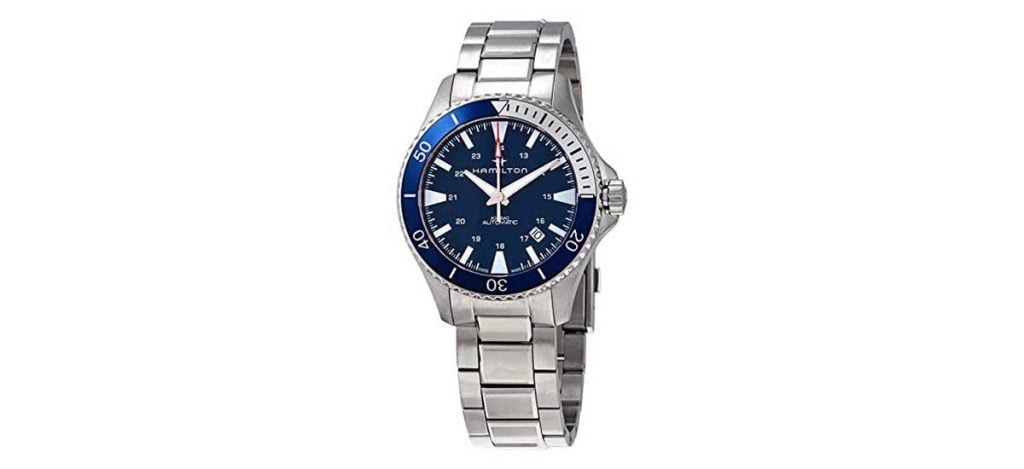
The Hamilton Khaki Navy Scuba Auto 40mm Blue dial is one of Hamilton’s more versatile offerings within its dive watch collection. It comes in a wearable 40mm case with 12.95mm in thickness, allowing it to fit under a dress cuff when necessary, and has 100m of water resistance.
With a sporty case profile (including crown guards) attached to a bracelet, it adopts the proven, loved, and most copied dive watch aesthetic made popular by models like the Submariner. This model finds a cohesive and purposeful balance in finishings, punching far above its price class.
With a full satin-brushed case, polished, signed crown, hefty satin brushed three-link bracelet with polished facets on its center links, and a satin-finished twin trigger deployant clasp with a beveled edge in high polish. It has a polished knurled edge uni-directional dive bezel that is deep, sharp, and easy to grip, with an anodized aluminum insert in blue, with white featuring for the first 15 minutes.
Under its anti-reflective sapphire crystal, you will see a clean yet distinctive dial layout, with baton and arrow-shaped lumed indexes, lumed hands, a contrasting red lume pip on the second hand, and a 24-hour scale at the center that is a nod to its military roots.
Also featured is a date window at 4.30, adding to its versatility in daily use. Priced at $795, equipped with the 80-hour power reserve H10 movement, this watch is easily one of the best dive watch offerings under $1,000.
Hamilton Khaki Navy BeLOWZERO (ref. H78505330)
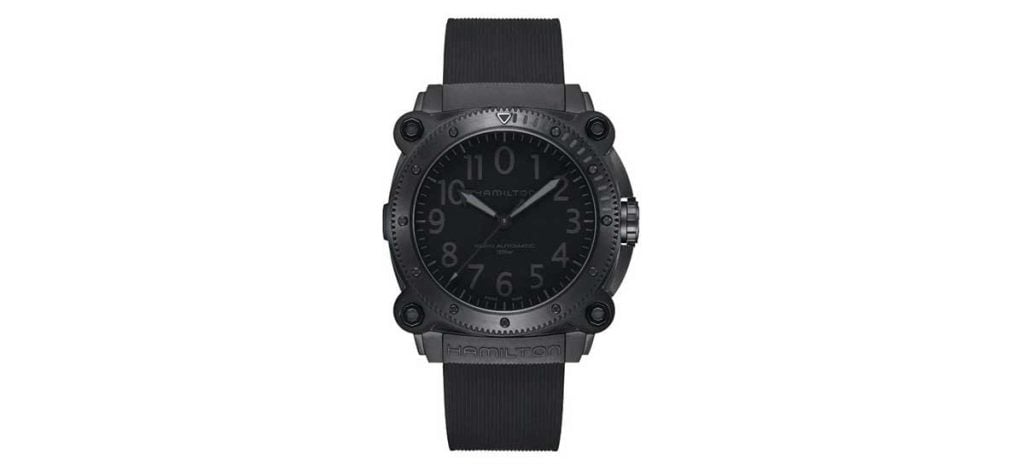
The original Khaki Navy BeLOWZERO was first introduced in 2008; its looks were polarizing and menacing. They were to be Hamilton’s ultimate expression of its Khaki Navy collection with 1,000 meters of water resistance. This watch would see the usage of a full titanium case in black PVD, marrying cues of Hamilton’s Art Deco historic design language with a futuristic interpretation.
For its most recent variant, the BeLOWZERO uses the H10 Movement with an 80-hour power reserve. Its 46mm case with 15.7mm in thickness in lightweight titanium attached to a sloping rubber strap allows for the watch to fit light, snugly, and comfortably on the wrist of whoever is brave enough to rock this beast of a watch.
Its design language pushes the boundaries of a sports diver design with 4 hex screws prominently visible on the case, double stem lugs for ultimate strap protection, and unique crown guards that blend into the profile of the case, which helps balance its heft.
Under its anti-reflective sapphire crystal is a matte black dial, with dark gray contrasting hands and indexes. Legibility here can be a challenge. However, it remains clean and balanced with no date and Breguet-style numerals, and ditching the 12 for a 0 adds to its BeLOWZERO personality.
Many know the BeLOWZERO to be the Martian watch after it was featured in the 2015 movie “The Martian” on the wrist of its main character. Through Hamilton’s long-standing relationship with the movie industry, this watch was chosen by its producers and not by Hamilton themselves.
With the movie timeline based in 2035, this is a testament to the futuristic design language embedded in this watch. Priced at $1,845, this watch comes in at a relatively affordable price point for a high-performing dive watch with movie credibility, offering many novelties for collectors to rejoice in.
Hamilton Khaki Navy Scuba Quartz Black Dial (ref. H82201131)
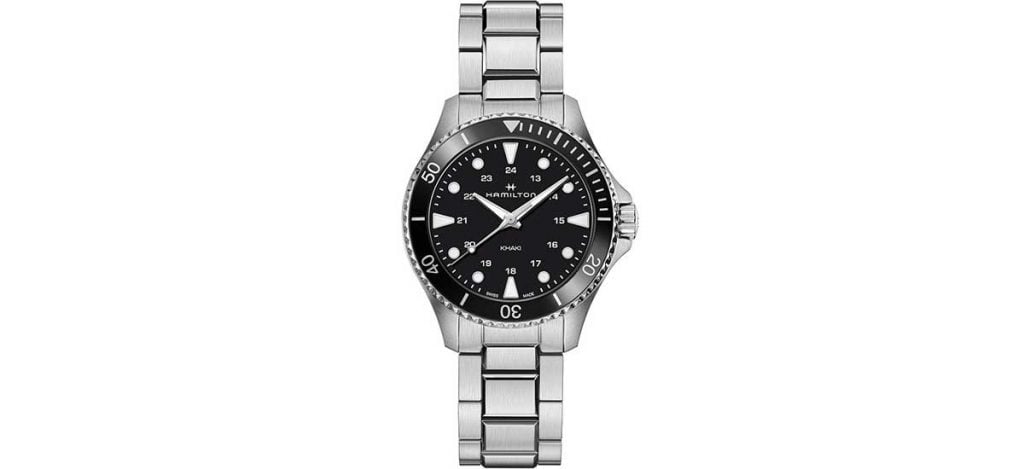
The Hamilton Khaki Navy Scuba Quartz Black Dial (H82201131) is Hamilton’s most entry-level dive watch offering on a bracelet. Yet, this may be hailed as the most wearable and slender watch in the lineup, owing to its quartz movement with all the benefits of the larger-higher-priced automatic alternatives. Can less really be more?
As with other scuba models, it features a sporty case with crown guards and a matching three-link bracelet. The overall finishings are satin-brushed with hints of high polish, striking a good measure of durability and ruggedness for a daily wear dive watch.
Visible through its anti-reflective sapphire crystal is a deep black dial with triangular lumed indexes at 12, 3, 6, and 9 o’clock, round lumed indexes, and lumed hands, offering great legibility. Surrounding the dial is a polished knurled edge unidirectional dive bezel with sharp teeth that make it easy to grip and an anodized insert in black with silver contrasting numbers and markings.
With a case diameter of 37mm, a thickness of only 10.77mm, and 100m of water resistance, this makes it one of the very few tool/dive watches on the market with sleek and classical proportions, much like the on-trend Tudor Black Bay 54. Priced at only $595 on a bracelet, it really does less to achieve more.
Hamilton Khaki Navy Frogman Titanium (ref. H77805335)
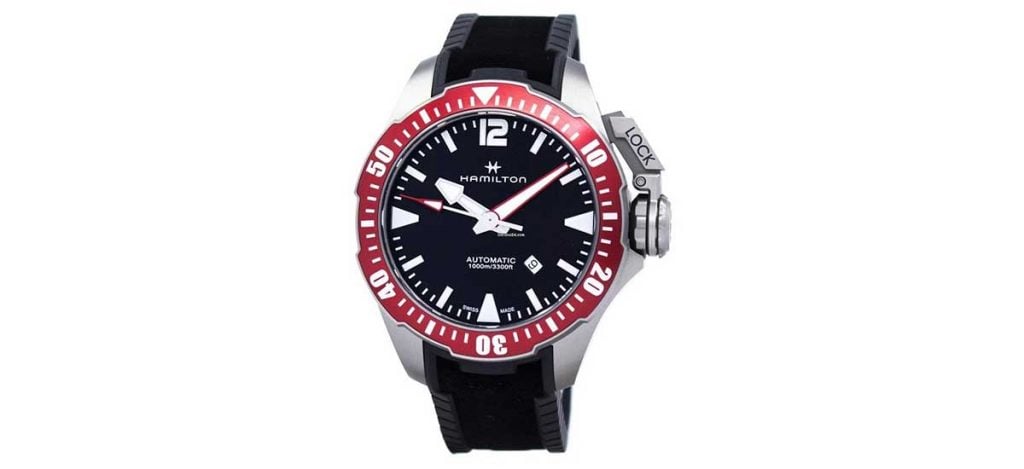
The Hamilton Khaki Navy Frogman Titanium (H77805335) is another variant within the collection to evolve the concept of the original and historic BUSHIPS Frogman models. Hamilton makes its history proud by giving us a no-compromise, hardcore, and very modern Frogman, with 1000m of water resistance.
46mm in diameter, and 15.95mm in thickness, this is a watch meant to be imposing and sporty on any wrist to be a thorough diving instrument. Yet, its heft is masked by the usage of titanium (exclusive to this model) and a rubber strap, making for a lightweight and comfortable wearing experience.
Sharing its design language with the original Frogman, its case features a ratcheting crown protector, a modern reinterpretation of the canteen-style crown used in the old days.
High legibility is also a must for the hardcore frogman, and under its anti-reflective sapphire crystal, you will discover a bare metal black sunburst dial with a mix of triangular lume indexes at 3, 6, and 9 o’clock, a 12-hour lumed index, baton lumed indexes to make up the rest of the hours, and lumed hands with hints of red to match the bezel.
Also visible is a date window at 4.30. Surrounding the dial is a dive bezel with notches for easy gripping underwater, with an anodized red bezel insert consisting of contrasting silver markings and a lume pip at zero. Equipped with the H10 movement and 80-hour power reserve, priced at $1,445, this is a true value-for-money modern hyper-diving instrument with a historic lineage.
Hamilton Khaki Navy Sub Auto (ref. H78615135)
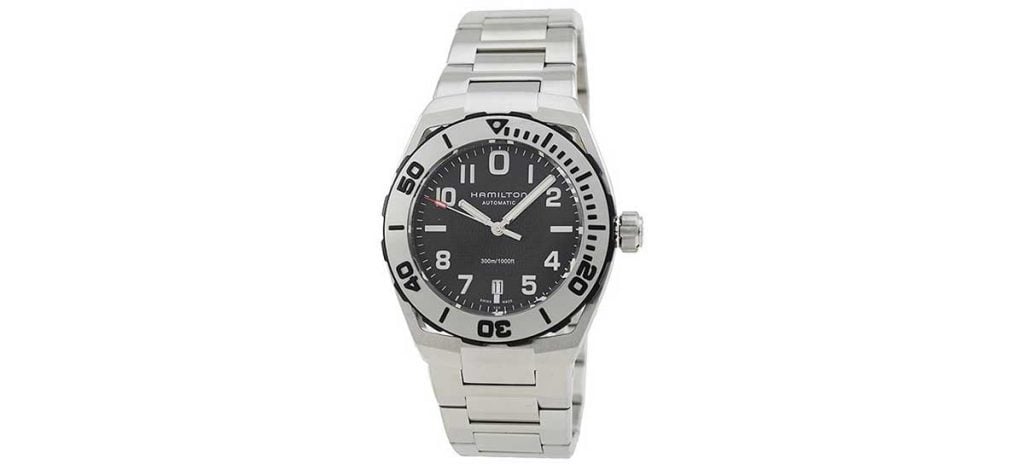
The Hamilton Khaki Navy Sub Auto (H78615135) stands out as an integrated bracelet dive watch design that takes inspiration from one of its most iconic and historic models, the 1928 Piping Rock – a model presented to the New York Yankees in celebration of their World Series win in 1928.
Rated with 300m water resistance, it has a 42mm diameter and 13.5mm thick tonneau-shaped case with no crown guards that integrate beautifully into an ingenious H-link bracelet. The watch is fully satin-brushed-finished, including its unidirectional dive bezel featuring black contrasts and a lume pip at zero, giving it a rugged vibe.
Under the anti-reflective sapphire is a unique dial to discover in gloss black, with a carbon fiber weave pattern at the center, lumed Breguet numerals, lumed batons at 3 and 6 o’clock, and a lumed 0 numeral to indicate the 12th hour.
The watch comes equipped with a caliber 2824-2 movement offering a 48-hour power reserve and a date function visible at 6 o’clock. This model is now discontinued and was originally priced at approximately $1,150. This Avantgarde dive watch proves that Hamilton can do dive watches differently and not follow the norm.
Hamilton Khaki Navy Scuba Auto Syroco Special Edition (ref. H82385340)
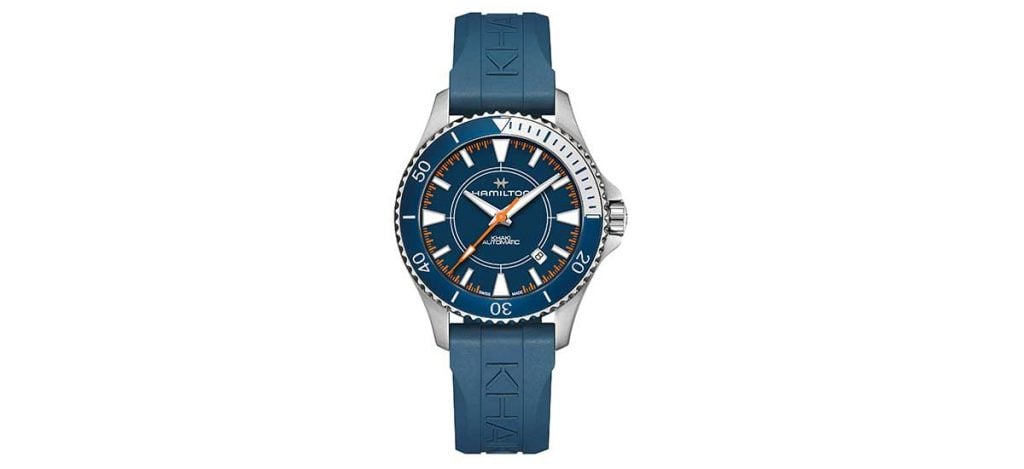
The Hamilton Khaki Navy Scuba Auto Syroco Special Edition (H82385340) was created to honor Hamilton’s partnership with Syroco. The core of the Syroco project is to create a cutting-edge wind-powered speed craft intending to surpass the sailing speed record while learning about and developing a future in carbon-free maritime transportation.
The Khaki Navy Scuba Auto stands out as the most versatile offering within Hamilton’s dive watch collection, this makes it the ideal choice to induce a funky choice of colors and design language as a highlight of the project.
It features a 40mm fully satin-brushed case with crown guards, a polished, signed crown, and a thickness of 12.95mm (making it waterproof to 100m), attached to a bright blue rubber strap. Under its anti-reflective-sapphire-crystal is a bright blue dial with a sector-like motif to symbolize the project’s target speed of 150 km/h.
The dial also features minute/seconds graduations and a second hand in contrasting high visibility orange, lume-filled hour indexes with triangular markers at 3, 6, 9, and 12 o’clock, and baton-filled lume indexes for the rest of the hours to make for a legible dial configuration.
Surrounding the dial is a polished knurled edge dive bezel with an anodized blue insert to match the dial and strap, with contrasting silver markings.
Priced at $795 (housing an H10 movement with 80-hour power reserve) with an association to speed and the choice of daring colors to suit the nautical theme, makes it one of the best summer-ready dive watches under $1,000.
Hamilton Jazzmaster Seaview Auto Chrono (ref. H37616331)
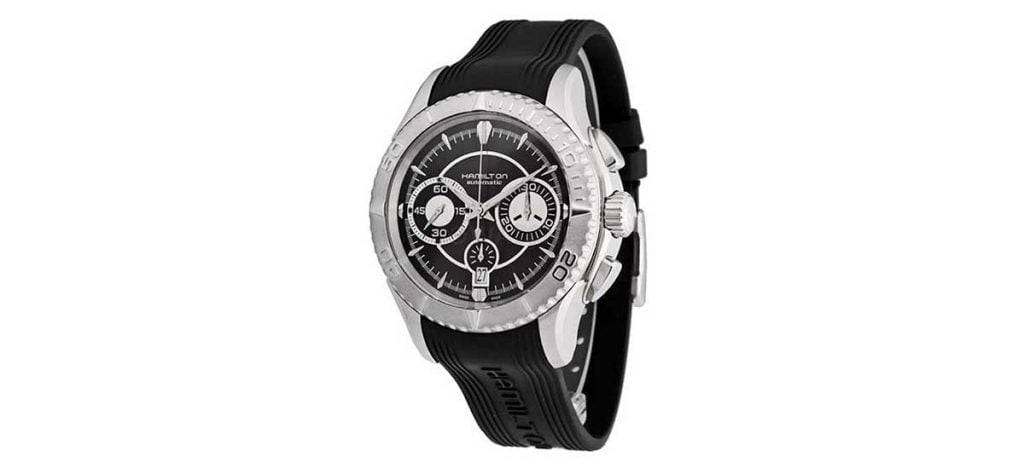
Hamilton is able to express its modern design language with the inclusion of the Jazzmaster collection. The Jazzmaster Seaview Auto Chrono H37616331 expands on this dynamic by marrying the contemporary chronograph with the functionality of a divers watch.
As a 44mm diving chronograph on an integrated rubber strap, it is an imposing sporty yet high-end-looking watch on the wrist. It sports a unique case shape with protruding beveled lugs and teardrop-shaped chronograph pushers, handsomely combining satin-brushed finishing with polished bevels. Its knurled edge dive bezel is in full steel, with a mix of brushed and polished surfaces and compass-inspired indications.
Under its sapphire crystal, the watch is made legible through high polish contrasting markers on its sunburst black dial. It is luxuriously detailed with the usage of a silver carbon fiber pattern on its second and minute chronograph sub-dials. At the same time, another black carbon fiber pattern is at the center of the dial to create a sector dial look.
Under its skin is a movement based on the legendary Valjoux-7750. Currently priced at $2,045, this is a feature-packed ultra-luxury-look-sports-dive-watch with the most iconic and proven automatic chronograph movement, making it a very novel dive watch offering.
Hamilton Khaki Navy Frogman Auto Black (ref. H77845330)
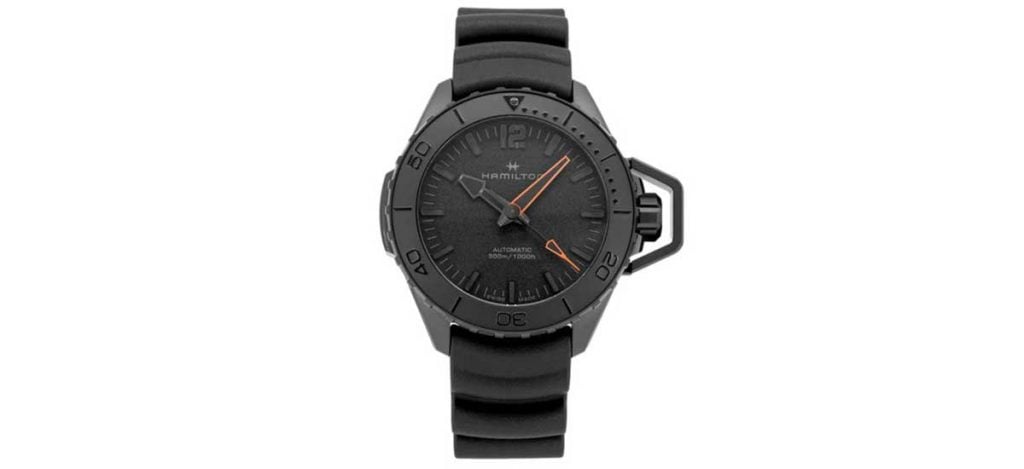
Just like the other Khaki Navy Frogman Auto 46mm mentioned earlier in this article, this model is identical and shares the same inspiration from the original BUSHIPS/Frogman models, with a modern case, movement, and newer interpretation of the canteen-style crown protector.
The unique aspect of this Khaki Navy Frogman Auto (H77845330) is that it’s fully blacked out in DLC. With a case size of 46mm and a thickness of 13.58mm, attached to a wave pattern tactical rubber strap, it makes for a wearable timepiece.
Its sporty modern case, rugged dive bezel, and detachable Panerai-esque crown protector give the watch its military aesthetic. Under its anti-reflective sapphire crystal, it sports a sandblasted black dial consisting of a 12 o’clock marker and baton indexes layout familiar to most serious dive watches for ultimate legibility.
Its hands and indexes feature black lume and can create an optical illusion to the eye by looking skeletonized. The only contrasting element on this watch is the usage of orange for the minute hand and a lume triangle on the second hand.
With 300m of water resistance, equipped with the H10 movement giving it an 80-hour power reserve, Hamilton proudly dubs this their most capable dive watch. With the all-black treatment, it’s a mean-looking dive watch offering, with a credible history, that can be had at $1,295.
Hamilton Khaki Navy Sub Auto Chrono (ref. H78716333)
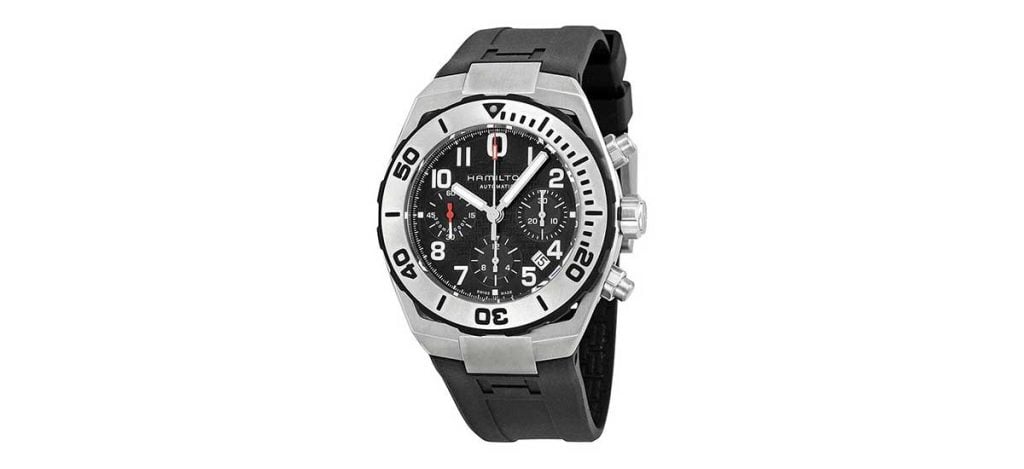
The Hamilton Khaki Navy Sub Auto Chrono (H78716333) is a tonneau-shaped chrono-diver inspired by the design of iconic and historic models like the 1928 Piping Rock. Its chronograph functionality is thanks to the ETA-owned, legendary Valjoux 7750 base and sports the 3-subdial layout of the 7753 with a date window at 4.30.
This is yet another imposing chronograph from the brand, with a case size of 43mm and a thickness of 16.5mm. Thanks to its tonneau-shaped case and integrated rubber strap, it is clearly a watch that stands out amongst the straight-lug sport dive watch designs common to many brands.
Its main highlight as a diving chronograph is its use of Rolex-Daytona-esque screw-in chronograph pushers, allowing for 300m of water resistance. The watch is finished entirely in satin brushing, therefore making it more impervious to scratches and giving it a tool-like aesthetic. Its dive bezel insert is also in full satin-brushed steel with contrasting black markers and a black surround with teeth for easy gripping underwater.
Under its anti-reflective sapphire crystal is a racing-styled black dial with a carbon fiber pattern at the center. It uses lumed Breguet style numerals, with a 0 in place of a 12 index, and lumed hour, minute, and second hands.
There is a slight tinge of red used on the second chronograph hand and around the lume on the edge of its second hand, uplifting its racing-styled dial ever so slightly. This model is now discontinued and had an original retail price of approximately $2,250.
Hamilton Khaki Navy Scuba Quartz White Dial (ref. H82221110)
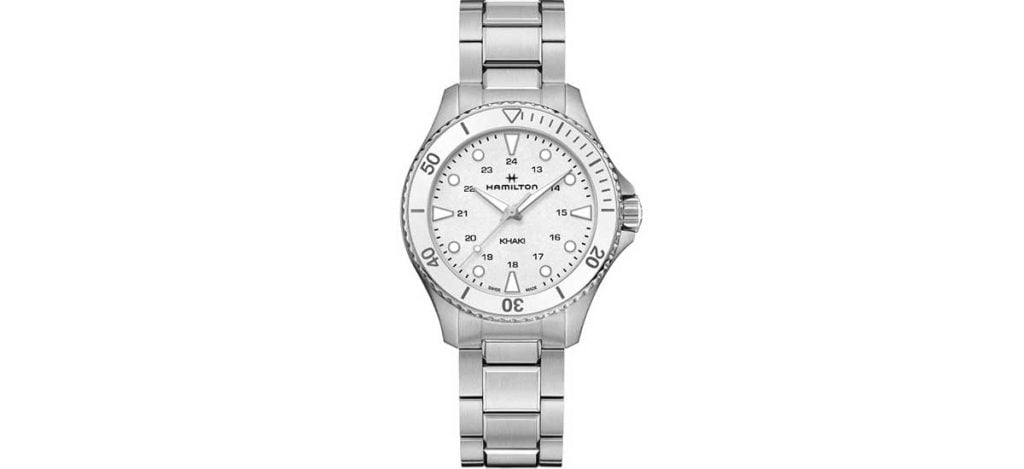
The Hamilton Khaki Navy Scuba Quartz (H82221110) takes on Hamilton’s most versatile and contemporary dive watch layout and adds a bit of femininity by replacing its anodized dive bezel insert with an elegant white ceramic with a matching white dial.
At 37mm in diameter, 10.77mm in thickness, and with a water resistance of 100m, this is a true dive watch from Hamilton that would appeal to the unisex buyer. Its sports-dive case adopts the popular layout with crown guards and full satin-brushed finishing.
It is mated to a substantial, three-link, satin brushed bracelet, with polished facets on its center links, utilizing a twin trigger satin brushed deployant clasp with a polished beveled edge. Its white dial features triangular lumed markers at 12, 3, 6, and 9 o’clock and round lumed plots for the rest of the dial.
This gives it a tool watch layout, and with no date, it appears clean and easy to read. At the center of the dial is the inclusion of a 24-hour scale, a nod to Hamilton’s military background. Priced at $675, and thanks to its quartz movement, this is an elegant and capable dive watch offering delicate dimensions best suited to delicate wrists.
Hamilton Khaki Navy BeLOWZERO Tenet Limited Edition (ref. H78505331)
The Hamilton Khaki BeLOWZERO sees subtle customization to become an official Tenet Limited Edition (H7505331), inspired by the plot of the sci-fi action film Tenet (2020), written and directed by Christopher Nolan, a leading filmmaker of the 21st century. The watch comes in two colorways, blue or red, which contain clues to the film’s narrative.
The BeLOWZERO can be described as a futuristic industrial diver. As a testament to this, it has seen itself involved in the script of two blockbuster films set in the future, also set in the harshest of environments. It has a 46mm cushion-shaped case, with hexagonal screws on all four corners of its case to give it a rugged aesthetic.
It is 15.7mm thick but can be forgiven for its incredible 1,000m of water resistance. The heft is masked by its DLC titanium case construction, making for a wearable watch on its contouring rubber strap protected by double-stamped lugs.
The case also features unique crown guards that blend into the case, as well as a robust dive bezel. Under its anti-reflective sapphire crystal is a matte black dial with large Breguet style numerals in black lume, with the 12 numeral replaced for a 0.
What is unique about this Limited Edition watch is the customization of its second hand, with a tip in either blue or red. As a result, it also comes with a matching blue or red spherical crystal-like display case designed by Nathan Crowley, the production designer of Tenet. Each colorway was limited to 888 pieces at a retail price of $2,095.
Hamilton Jazzmaster Seaview Quartz Chronograph (ref. H37512131)
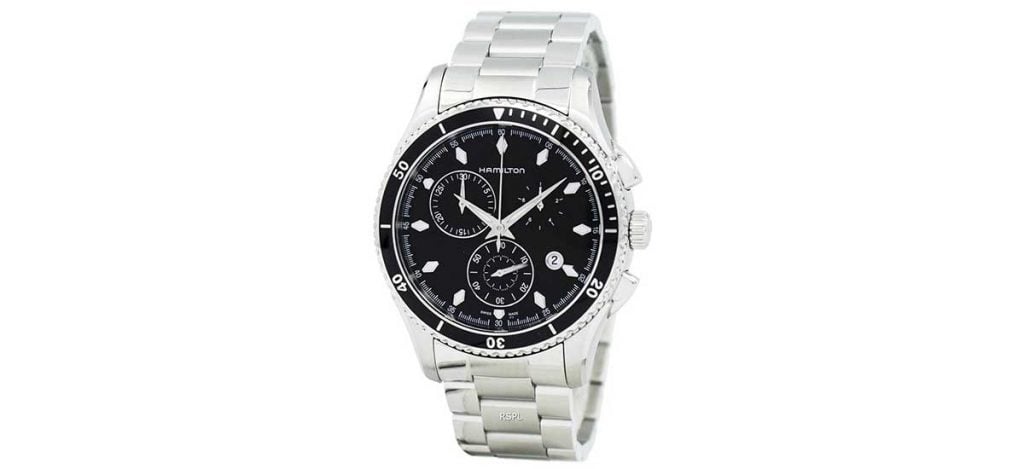
The Hamilton Jazzmaster Seaview Quartz Chronograph (H37512131) is the dressiest model within this list of dive watches. Its 100m water resistance is masked by an elegant high polish design that is suitable for the gala and need not be taken off at the late-night pool party.
With a case size of 44mm and a thickness of 12.6mm, it marries its large size with slim proportions thanks to its quartz caliber. Its sports-inspired case is made elegant with protruding large polished beveled lugs, polished teardrop-shaped chronograph pushers, and a polished, signed crown.
It is attached to a three-link Oyster-style bracelet, with satin brushed center links and high polished outer links. Under its sapphire crystal is a 3-register chronograph black dial with diamond-shaped indexes and a rounded date window at 4.30. Adding to its dive watch functionality, it sports full lume on its indexes and hands, with a polished coin edge black insert dive bezel.
Adding to the charm and allure of this timepiece, in the 2020 movie Tenet, John David Washington is seen sporting the watch on his wrist throughout the film. His on-screen personality and elegant style were a great match and a testament to its versatile design. This model is now discontinued and had an original retail price of approximately $1,100, and it can be found on the secondary market at a discount, making it great value for money.
Hamilton Khaki Navy Scuba Auto Green Dial (ref. H82375161)
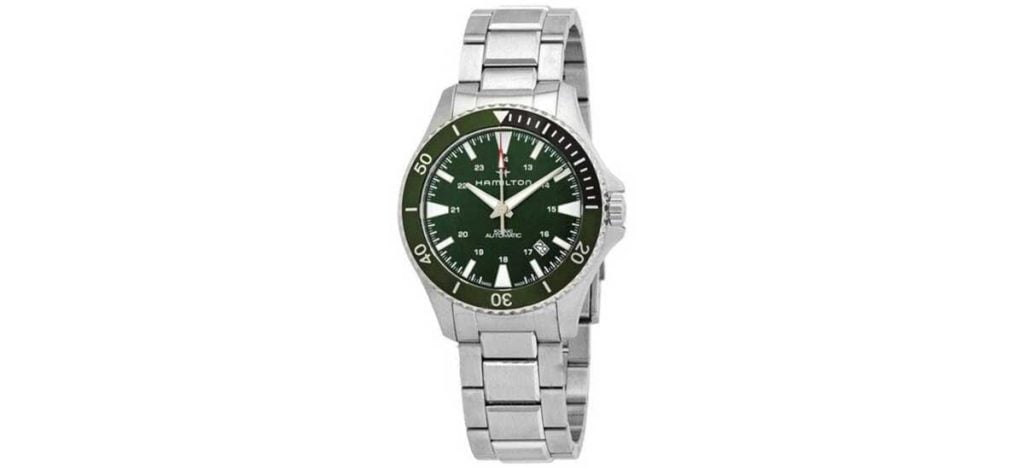
The Khaki Navy Scuba Auto (H82375161) once again uses Hamilton’s most versatile and popular dive watch configuration and gives it the hottest colorway of this decade, featuring a khaki green dial and dive bezel.
Equipped with a 40mm case, 12.95mm of thickness, on a solid three-link steel bracelet, this watch meets the gold standards of the modern wearable dive watch. Finished like a high-end tool watch, it has a full satin-brushed crown guard equipped case with a polished signed crown attached to a satin-brushed bracelet with polished bevels on its center links and a satin-brushed clasp with crisp polished beveling.
Reminiscent of models in a much higher price category. It features an easy-to-grip polished knurled edge dive bezel, with a khaki green insert consisting of black for the first 15-minute indications. Under its anti-reflective sapphire crystal is a dial resembling the expected highly legible dive watch format, with large triangular markers at 12, 3, 6, and 9 o’clock.
There’s a date window at 4.30 for added practicality. Priced at $795, with an 80-hour power reserve, this is an exquisite green diver execution from a brand with a history in tool watches.
Hamilton Khaki Navy Frogman Auto 42mm (ref. H77605135)
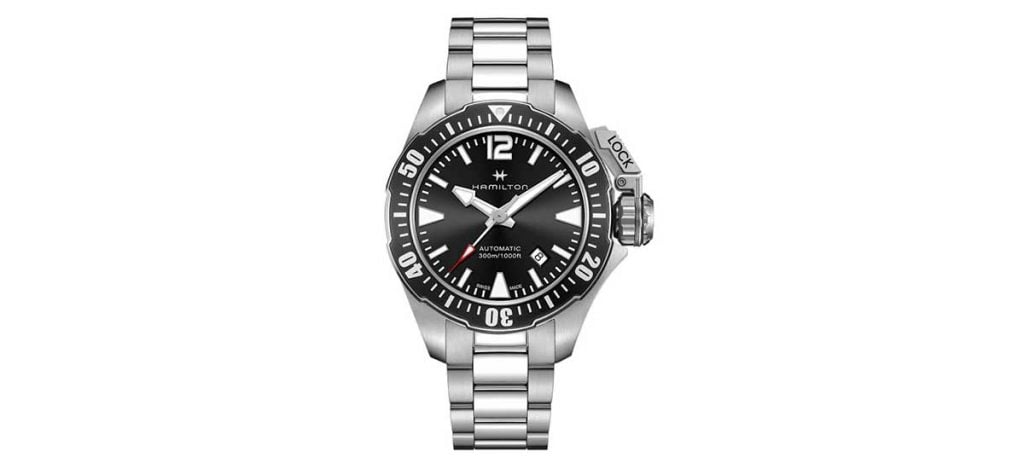
For those who want more, we have a “more wearable” Frogman, the Hamilton Khaki Navy Frogman Auto 42mm (H77605135). This watch has legitimate dive watch history, which can be seen by the ratcheting crown guard protector, an innovation of Hamilton’s original BUSHIPS Frogman models.
This crown guard gives the wearable watch something tactical and functional under a hardcore diving situation or when diving under a desk. That being said, its wearable 42mm sports dive case attached to an Oyster-style three-link bracelet with polished center links makes it fantastically versatile for daily use.
This model comes equipped with a notched dive bezel with a black insert, contrasting numerals, and a lume pip at 12 for easy usability and readability. Under its anti-reflective sapphire crystal is a black sunburst dial with a lumed 12 index, triangular lumed indexes at 3, 6, and 9 o’clock, lumed rectangular indexes for the rest of the numerals, and lumed hands with a pip of red on the second hand, making for a highly legible and recognizable dial.
For added functionality, there is a date window at 4.30. Equipped with the 80-hour power reserve H10 movement and priced at $1,095, this would make the perfect choice for a one-watch collection.
Conclusion
Today, Hamilton is in a great position to offer a wide selection of divers and has built a formidable dive watch collection to solidify its interest in providing the best value-for-money luxury diver watch. With reliable movement technology from ETA, being a mutual brand owned by the Swatch Group, Hamilton is a force amongst equally priced watch brands.
It has transformed its success to push the envelope in modern innovation and continues to evolve its historic models, giving the brand a lot of attention within the dive watch space. Hamilton’s long relationship with on-screen appearances adds a depth of relatability and a premium identity to the brand in the modern age.

